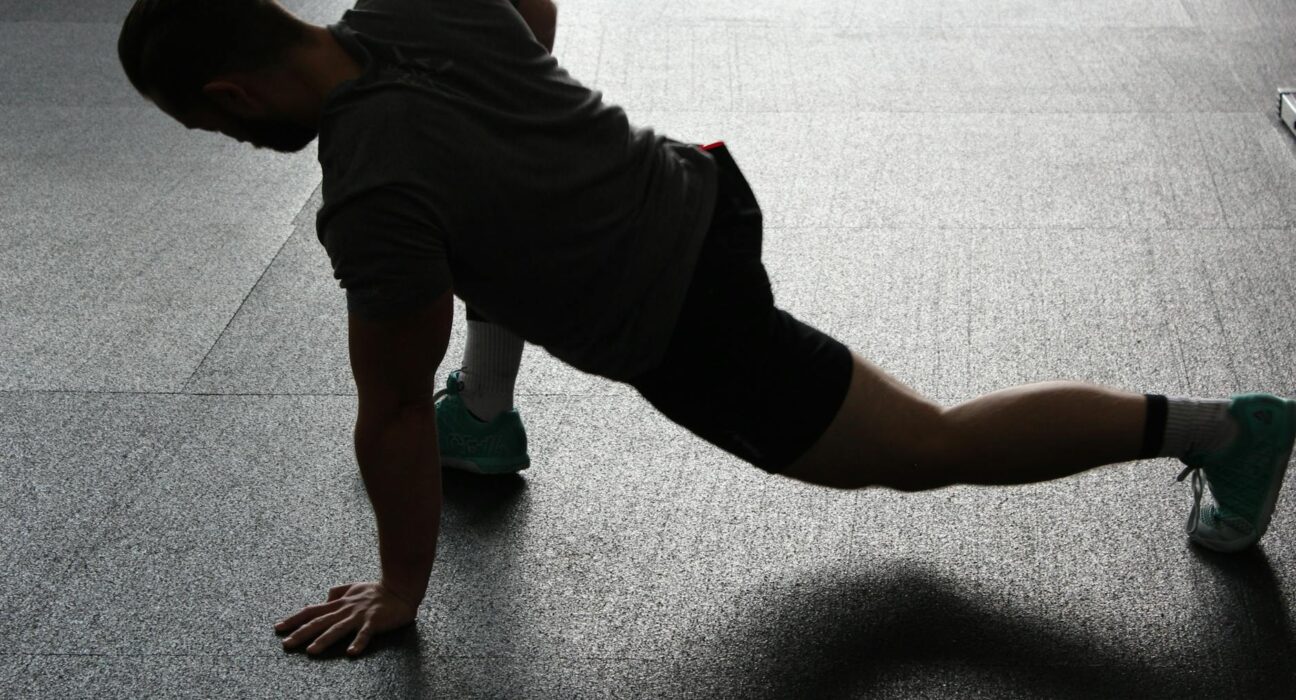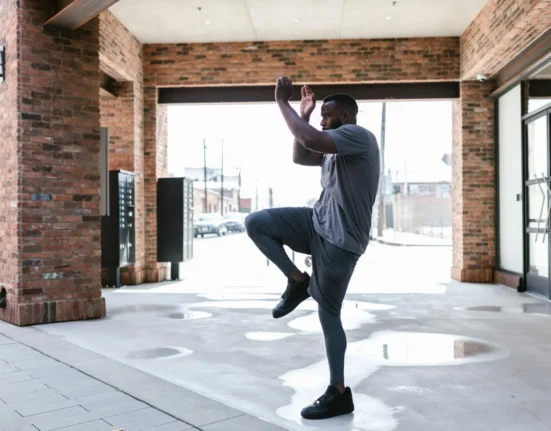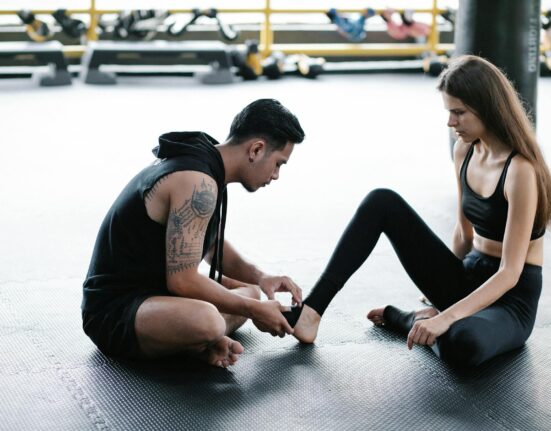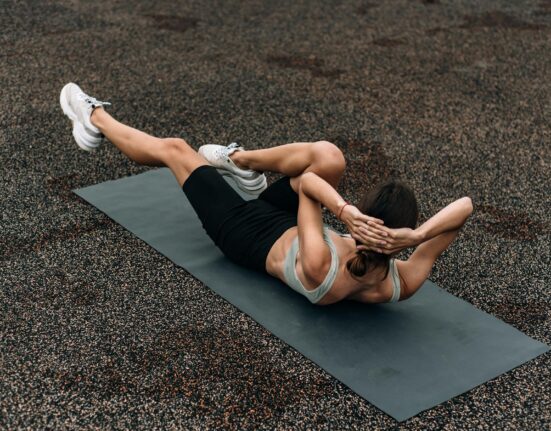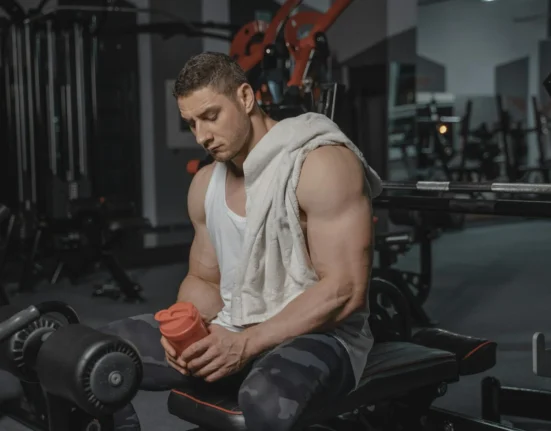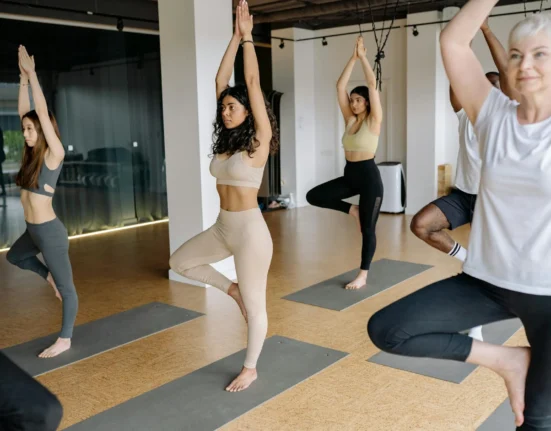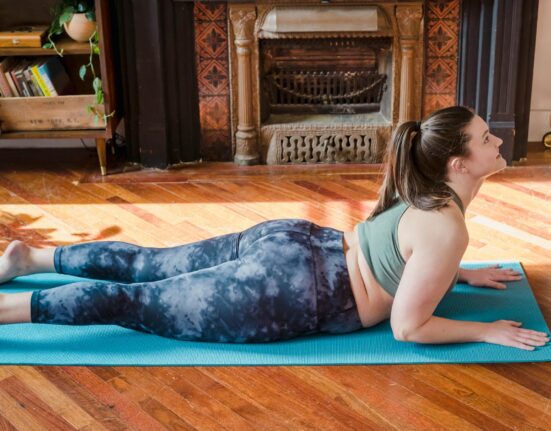Picture a cool morning at the park or the buzz of energy in your favorite gym. People lace up their shoes, music pulses, and bodies start to move. But some jump right in, skipping those important first few minutes to warm up.
Those who rush in often feel stiff, struggle to get into their groove, or pull a muscle they didn’t see coming. Warming up isn’t just about stretching limbs, it activates your mind and body, getting your joints, muscles, and focus ready for action.
Taking a few minutes now can help keep you safe, boost performance, and make workouts feel better from the first step. That’s why a proper warm-up sets the tone for everything that comes next.
What Happens in the Body During a Warm-Up
Stepping onto the mat or the gym floor, those first few minutes of movement create a ripple of changes inside your body. A warm-up isn’t just ticking a box, it’s a physical switch that sets everything in motion. As you gently move, stretch, and breathe deeper, your body starts to wake up from the inside out.
Muscles Get Ready for Action
A slow warm-up urges your muscles to gradually come alive. Think of your muscles like elastic bands that stiffen in the cold. As you move, warmth flows in, making them soft, stretchy, and less likely to snap.
- Increased blood flow: More blood rushes to your muscles, like a river after rain, bringing nutrients and energy.
- Improved flexibility: Muscles and tendons loosen up, making it easier to move smoothly and avoid strains.
This gentle start is like waking up with a good stretch instead of leaping straight out of bed.
Joints Become More Mobile
Your joints work like door hinges—they need lubrication to move without squeaking or sticking. During a warm-up, movement raises the temperature around your joints, which lets them glide more easily and protects against stiffness.
- Synovial fluid release: Movement boosts the fluid inside your joints. This natural oil makes each motion feel smooth and controlled.
- Better range of motion: Loosened joints help you move freely, so you can squat deeper, reach higher, and twist further.
You’ll find each rep or stride feels lighter and less forced once your joints have a chance to adapt.
The Heart Kicks into Gear
Your heart might feel slow or heavy before warming up. Gentle activity nudges it to beat faster and stronger, like turning up a dial rather than flipping a switch.
- Increased heart rate: Blood pumps faster, sending more oxygen where it’s needed most.
- Steadier breathing: Oxygen delivery improves as your lungs expand and muscles get ready for challenges ahead.
A smooth transition means less huffing and puffing once you hit high gear.
Oxygen and Energy Delivery Improve
All these quick changes prime your body to perform. Warmed muscles take in more oxygen, turning it into energy faster. Every cell acts like it’s been handed the right tool for the job.
- Blood vessels open up, boosting circulation.
- Body temperature rises, setting the stage for peak performance.
This chain reaction sets you up for stronger, safer, and more enjoyable workouts. Each warm-up stage prepares your body from the inside out, so you’re not caught off guard the moment you pick up the pace.
Benefits of Warming Up Before Exercise
Warming up isn’t just a habit for seasoned athletes—it’s the secret ingredient to safer, stronger, and more enjoyable workouts for everyone. Before charging into your main activity, a few strategic minutes can shield your body and sharpen your game. Here’s why those first steps matter more than most people think.
Prevents Injuries
A thoughtful warm-up acts like armor for your body. As you move gradually, blood flows into your muscles, tendons, and ligaments. This extra circulation heats tissues up, making them soft, pliable, and ready to move without resistance. Think of it as oiling up an engine before setting out on a road trip.
- Reduced risk of muscle strains: Warm muscles stretch easier, so sudden movements or heavy lifts don’t cause tearing.
- Strong, ready tendons and ligaments: These connective tissues adapt to gentle movement, facing less stress once activity ramps up.
- Less chance of sprains: Ankles, knees, and shoulders become more stable, staying in the right position during jumps, runs, or lifts.
Skipping your warm-up can leave your body stiff and surprise your muscles and joints, making them easier to hurt. Five to ten minutes now may save weeks of recovery later.

Photo by Ketut Subiyanto
Boosts Performance
Your first few minutes of intentional movement set the stage for how your body responds to the entire session. Warming up signals your muscles to wake up and take on more work as your heart rate and body temperature climb.
This means you can:
- Lift heavier, run faster: Primed muscles are more responsive and less likely to cramp or fatigue fast.
- Move more easily through every rep: Muscles and joints glide without catching or sticking, so you use less energy for each movement.
- Stretch further and safer: Loosened tissues give you a greater range of motion, powering your jumps, sprints, and stretches.
Think of your body as a high-performance car—it needs time to reach its top speed without jolting gears. A little time to warm up means you get the best out of every movement.
Prepares You Mentally
The body isn’t the only thing that needs to warm up. Your mind sometimes lags behind, carrying distractions or nerves from the day. A good warm-up routine becomes a moment to check in with yourself, tune out noise, and focus on what’s ahead.
Warming up gives you:
- Mental clarity: A set routine helps quiet any stress, putting you in the zone and ready to perform.
- Sharper focus: As movement grows rhythmic, you can hone in on technique, goals, and breathing.
- Calm confidence: Starting slow eases nerves and builds a feeling of readiness as you ramp up.
It’s not just about muscles—mindset shapes your motivation, energy, and drive from the very start. Use your warm-up as a mental switch, helping everything click into place before you give your all.
Types of Warm-Up Exercises and How to Structure Them
How you warm up shapes both the comfort and quality of your workout. The right routine isn’t just about breaking a sweat—it’s about prepping your body in stages. Each type of warm-up has its own role, from waking up your joints to getting specific muscles ready for action. Understanding how to structure your warm-up can make all the difference, whether you’re at the gym, on the track, or jumping into a pool.
General Warm-Ups
Before diving into dynamic moves or sport-specific drills, start with simple, whole-body activities. The purpose here is to raise your heart rate gently and send blood flowing to your muscles. This phase is like turning the ignition on your car and letting the engine run for a minute before driving off.
Try a few of these general warm-up moves:
- Brisk walking, either on a treadmill or around the gym
- Light jogging, keeping your pace easy and steady
- Jumping jacks for one to two minutes
- Easy cycling on a stationary bike
- Gentle skipping or marching in place
These basic exercises loosen up your entire body. Spend about 5–10 minutes here, just enough to feel warmer and a little more awake.
Dynamic Stretching
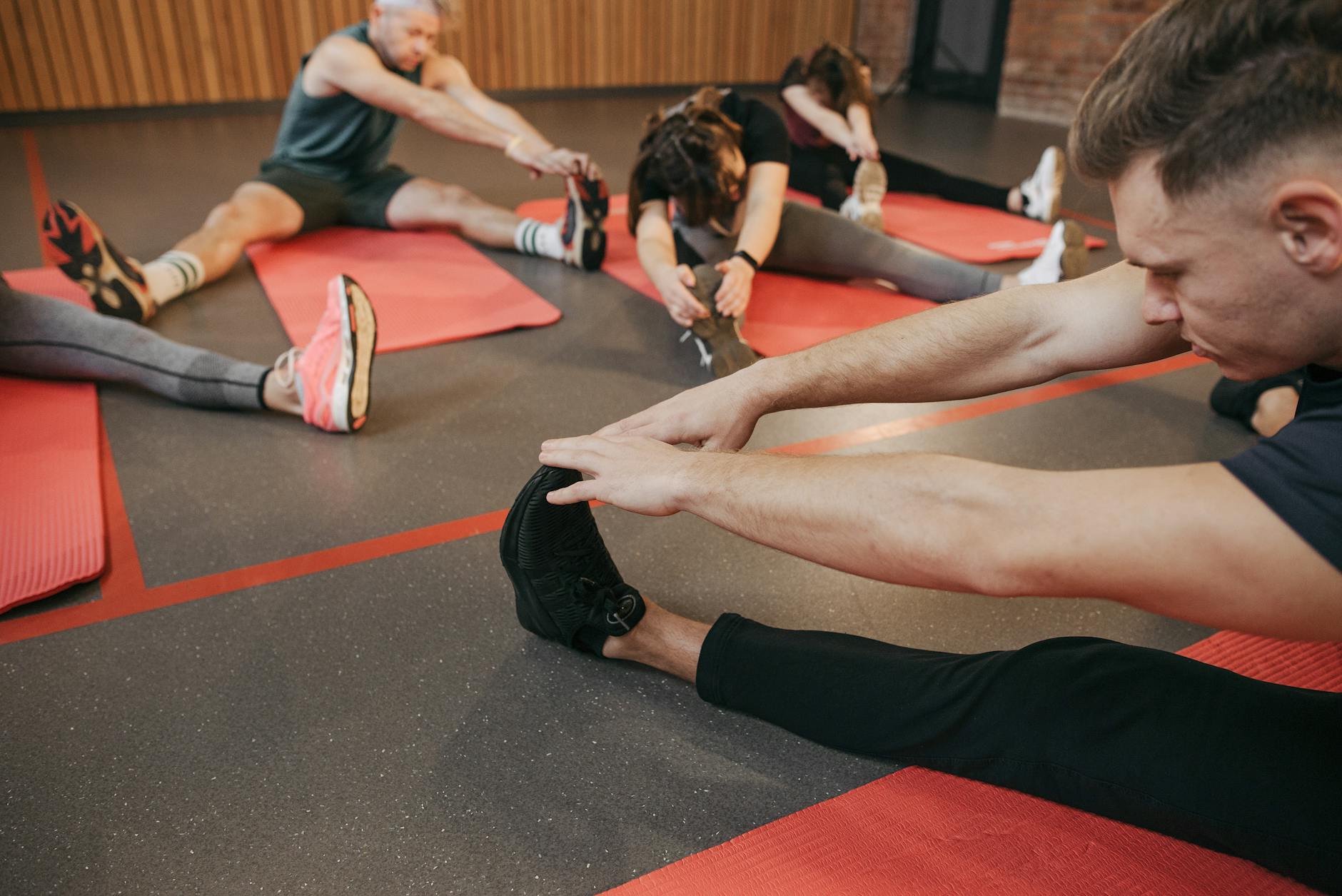
Photo by Pavel Danilyuk
Next, dynamic stretching gets your muscles ready to move with speed and power. Unlike static stretching—where you hold each stretch for 15 or 30 seconds—dynamic stretches use slow, controlled movement. This helps boost flexibility, coordination, and muscle temperature all at once.
Some useful dynamic stretches include:
- Leg swings: Stand tall, swing one leg forward and back, then side to side
- Arm circles: Extend arms out, circle them forward and backward in small, then larger, loops
- Hip circles: Hands on hips, make gentle circles with your hips
- High kicks: Walk forward, kicking each leg up as you go
- Walking lunges: Step forward into a lunge, then bring the back leg forward to repeat on the other side
This stage should last 5–10 minutes. Aim for fluid motions, not bouncing or jerking. You want to wake up joints and move muscles through their full range, instead of locking them in place.
Dynamic stretches are better before your workout because they send signals to your nervous system. Your brain connects with your muscles, helping you move with purpose and balance from your very first rep or stride.
Sport- or Activity-Specific Warm-Ups
The final layer of a smart warm-up targets the muscles and skills you’ll use most in your chosen activity. Here, you practice movement patterns that mimic your workout, turning on the exact muscles you’ll need.
Here are real-world examples for different activities:
For running or jogging:
- Bodyweight squats
- Alternating lunges
- Butt kicks
- High knees
- Strides (brief sprints at 75% effort)
For weightlifting:
- Air squats or push-ups
- Light sets with just the barbell
- Band pull-aparts or resistance band rows
- Scapular push-ups for shoulder stability
For swimming:
- Arm circles and shoulder rolls
- Torso twists
- Light jumps or skipping
- Some easy laps at a comfortable pace
For team sports (like soccer or basketball):
- Side shuffles
- Carioca (grapevine steps)
- Quick skips or toe-taps
- Short sprints or dribbling drills
Tailoring your warm-up this way prepares your body for what’s next, sharpens your technique, and builds muscle memory for better, safer performance from the start.
Each phase of the warm-up serves a unique purpose. Start broad and simple, get your blood moving, then focus in with dynamic moves and finally add drills close to your main activity. This layered approach helps you feel physically ready and mentally switched on for whatever comes next.
Common Warm-Up Mistakes and How to Avoid Them
Warming up sounds simple, but it’s easy to get it wrong. Many people cut corners just to get to the “real” workout without realizing these shortcuts can cause harm or dull any progress. Let’s take a look at the slip-ups many make and how you can steer clear to keep your training safe, strong, and satisfying.
Skipping the Warm-Up Entirely
It’s tempting to start heavy lifting or sprinting right away, especially when busy or impatient. Skipping the warm-up is like starting a cold engine on a winter morning and immediately flooring the gas pedal.
- Your muscles and joints don’t have time to prepare, increasing the risk of pulls and strains.
- You’ll likely feel stiff, slow, and uncoordinated at first, making it harder to hit your goals.
How to fix it:
Make it a non-negotiable. Commit to at least 5-10 minutes of easy movement before every session. Even a short walk, march in place, or quick set of jumping jacks will do more for you than nothing at all.
Stretching Cold Muscles
Many believe static stretching (holding a stretch and reaching as far as possible) is a good warm-up. In reality, stretching cold muscles can cause small tears, reduce power, and make you feel weaker.
- Cold muscles behave like cold rubber bands—they’re less flexible and snap more easily.
- It doesn’t raise the heart rate or prepare your nervous system for action.
How to fix it:
Save static stretches for the end of your workout. Start with dynamic stretches instead—gentle movements that wake up your joints and muscles, like leg swings, arm circles, and bodyweight lunges.
Rushing Through the Routine
A rushed warm-up is barely a warm-up at all. Skipping steps or sprinting through each move increases your chance of missing key muscle groups or movement patterns.
- The body doesn’t get enough time to adapt.
- Joints and muscles miss out on full-range, controlled movements.
How to fix it:
Treat your warm-up as part of your workout, not an afterthought. Slow down, focus on your form, and move with control. Remember: quality beats speed every time.

Photo by Yaroslav Shuraev
Doing Only One Type of Warm-Up
Some stick with just a jog, while others only perform a few quick stretches. Neither approach fully prepares the body for a varied workout.
- Only raising your heart rate doesn’t get muscles flexible enough.
- Stretching without moving doesn’t boost circulation or prepare the heart and lungs.
How to fix it:
Mix it up. Use a combination of general aerobic movements, dynamic stretches, and activity-specific drills before ramping up the intensity.
Ignoring Personal Needs and Workout Type
Not all warm-ups fit every body or every workout. Using a cookie-cutter routine ignores your unique needs and what you’re about to do.
- Tight areas or past injuries don’t get addressed.
- You won’t target the right muscles for your session.
How to fix it:
Pay attention to your body. Adjust your warm-up to focus on areas that feel stiff or sore, and mimic the main movements in your workout. If you’re about to sprint, include some quick-feet drills. If you’ll lift weights, warm up with lighter sets or prep moves for those muscles.
Key Takeaways
Keep your warm-up simple, mindful, and tailored to you.
Remember:
- Never skip it, even on light days.
- Start with movement, not static stretches.
- Don’t rush—move with care.
- Mix aerobic, dynamic, and sport-specific exercises.
- Make it personal, targeting your needs and planned activity.
These small shifts in your routine can pay big dividends over time with fewer injuries and better performance session after session.
Making Warm-Ups a Lasting Habit
Building a warm-up into your fitness routine should feel as natural as tying your shoes before you head out the door. But with long to-do lists and crammed schedules, even the best intentions can fade after a busy week. The secret is to treat your warm-up as a small daily ritual—a moment for yourself, like morning coffee or winding down with a favorite song.

Photo by Polina Tankilevitch
Strategies to Make Warm-Ups Stick
You don’t need extra willpower—just a few tricks to build the routine until it feels automatic. Try these proven ways to lock in your warm-up, even when motivation runs low:
- Make it non-negotiable. Treat your warm-up as the start of your workout, not just a prep. Get in the habit by telling yourself that the workout doesn’t begin until you’ve warmed up.
- Pair it with something you enjoy. Listen to your favorite music, podcast, or even catch up on an audiobook during your warm-up time. This creates a small reward you’ll start to look forward to.
- Keep it visible. Write your warm-up routine on a sticky note and put it somewhere you’ll see it—your phone case, water bottle, or inside your gym bag.
Even small steps, like laying out your workout clothes the night before or setting a phone reminder, can gently push you to stay on track.
Turn Warm-Ups Into Something You Like
Routine shouldn’t mean boring. Spice it up by choosing movements or activities you enjoy. Warm-ups can become a personal highlight—your time to check in with your body before things get intense. Here are a few ways to make it fun:
- Mix up your playlist and choose upbeat songs that set the tempo for your movement.
- Try variety: Switch up moves every week to keep things fresh, cycling between different stretches and dynamic drills.
- Invite a friend for a warm-up chat. Social energy makes the habit easier to keep and gives you someone to share progress with.
When your brain links warm-ups to enjoyment, you’ll stop viewing them as chores and start to miss them on rest days.
Track Your Progress and Celebrate Wins
Progress doesn’t just come from bigger lifts or longer runs. Tiny wins in your warm-up—feeling less stiff, moving more freely, or needing less time to get in the groove—are worth celebrating.
Stay motivated by:
- Jotting down a daily note after your warm-up, such as “felt more flexible today” or “joints less achy.”
- Using a tracker app or simple calendar to mark days you completed your warm-up.
- Taking a before-after video every few weeks to see changes in your form, posture, and mobility.
- Setting small goals, like shaving 30 seconds off your routine or holding a stretch a bit longer.
Even on days when the workout is light, your warm-up becomes proof you showed up and honored your commitment.
Smart Habits for Busy Lifestyles
Some days are too packed, and it feels impossible to fit in the warm-up. That’s okay—consistency beats perfection. On extra-busy mornings or evenings:
- Cut the routine in half. Even 3 minutes of easy bodyweight moves is better than nothing.
- Stack it: Warm up while you wait for the coffee to brew or during your kids’ bedtime routine.
- Stay flexible: If you can’t make it to the gym, do a quick warm-up at home to keep your streak alive.
Remember, the real test of a habit isn’t what you do on perfect days. It’s how you adapt on the busy ones.
Final Motivation to Stay the Course
Warm-ups are tiny investments with huge payoffs. Every time you take those first few minutes, picture it as putting a little coin in your body’s wellness bank. Over time, these small daily deposits add up—fewer injuries, easier movement, and a mindset that’s ready for anything the day throws your way.
Conclusion
A few minutes spent warming up can shape your entire workout, guiding your energy from sluggish to sharp. By making these routines a habit, you give your muscles, joints, and mind a gentle start, setting yourself up for fewer injuries and stronger, smoother movement.
Test it for yourself during your next training session. Notice the change in how easy it feels to get into your rhythm, the comfort in each stretch, the confidence as you move. Over time, these small acts add up, building a stronger, more resilient you.
Thank you for reading and investing in your well-being. Share your favorite warm-up moves in the comments, and inspire others to protect and prepare their bodies for every new challenge.


